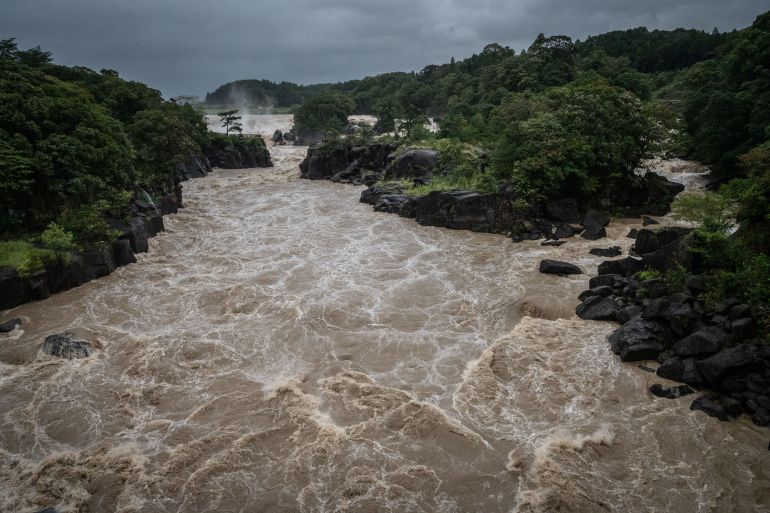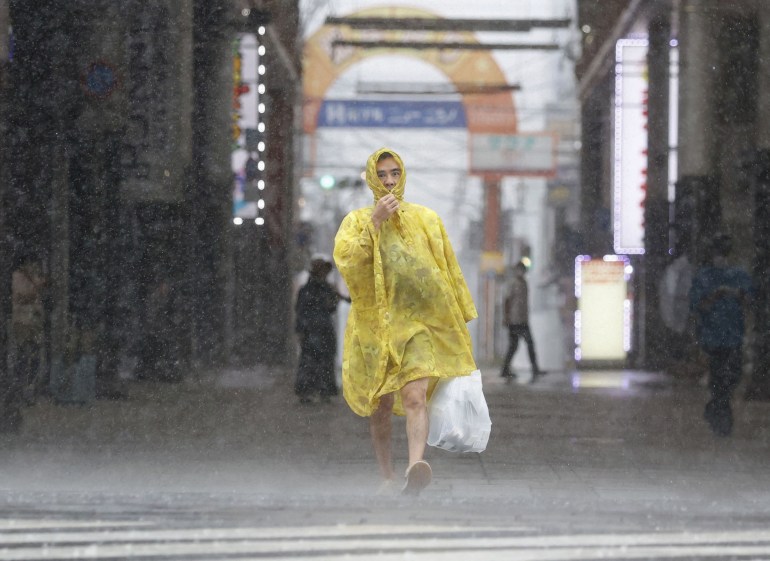Typhoon Nanmadol lashes Japan with heavy rain; one killed
Nanmadol, the 14th typhoon to hit Japan this season, is now heading towards Osaka, Kyoto and Tokyo.

Typhoon Nanmadol pounded southwestern Japan with ferocious winds and record rainfall on Monday, killing at least one person and leaving 340,000 homes without power.
Prime Minister Fumio Kishida delayed his departure to New York, where he is due to deliver a speech at the UN General Assembly, until Tuesday to monitor the impact of the storm.
Keep reading
list of 4 items‘Unprecedented’ storm lands on Japan; 4 million told to flee
Millions urged to evacuate as Japan braces for typhoon
India and Japan to hold more military drills to deepen ties
Japan’s 14th typhoon of the season made landfall near Kagoshima city late on Sunday before battering the western island of Kyushu and roaring into the main island of Honshu.
A river in Kyushu’s Miyazaki prefecture overflowed, flooding fields and roads, footage from state broadcaster NHK showed. Other video showed a riverside house hanging over a torrent, roofs ripped off buildings, and billboards toppled.
NHK said one man was killed when his car was submerged by a flooded river, and firefighters were trying to determine if a man in his 40s was inside a hut that was buried by a landslide.
At least 69 people were injured, it said.
The storm is now moving east along Japan’s main island towards the cities of Osaka and Kyoto, and is expected to reach the capital Tokyo on Tuesday.
Nanmadol packed sustained winds of 108 kilometres per hour (67 miles per hour) and gusts of up to 162km (100 mph) per hour, according to the Japan Meteorological Agency.
Tens of thousands of people spent the night in sports centres and other facilities as a precautionary measure after warnings of floods and landslides.

The trade ministry said about 340,000 households, most of them in Kyushu, were without electricity as of early Monday morning.
As the storm moves northeast up to 400 millimetres (15.75 inches) of rain is expected in the central Tokai region, the nation’s industrial heartland, over the next 24 hours, the Japanese Meteorological Agency said.
A flooding advisory is in place for Tokyo and neighbouring Kanagawa prefecture.
“We need to remain highly vigilant for heavy rains, gales, high waves and storm surges,” an agency official said at a news conference.